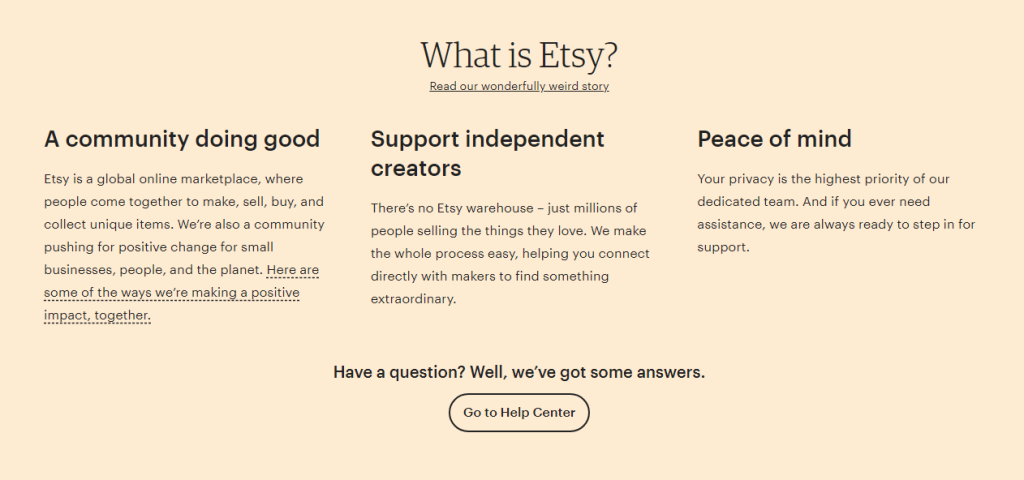If you’re looking to sell your digital products online, two popular platforms to consider are Payhip and Etsy. Both platforms offer a way to sell your products to a global audience, but they have some key differences.
Payhip is better for creators who want to sell their digital products like courses and digital downloads. Etsy is for people who want to sell physical(and digital) products and the benefit is that there is a marketplace of buyers but the fees are higher than Payhip
[lasso ref=”sell-digital-downloads-courses-payhip” id=”1412″ link_id=”2852″]
Payhip
Payhip is a platform that allows you to create your own online store or website within minutes for free. No technical know-how or design skills are required. You can upload any type of file (PDF, ZIP, XMP, DNG, etc.) and customers can complete their purchase in seconds. Payhip automatically deals with all the nitty-gritty from end to end, so you can focus on doing what you love. You get paid instantly to your PayPal or Stripe account.

Payhip is a company that was founded in 2011. It is headquartered in London, UK, and has a team of 10 employees. Payhip promises a convenient strategy for selling all kinds of downloads and memberships. Payhip offers support for selling downloads and memberships, and there’s even EU VAT handling for digital products.
Etsy
Etsy is a platform that allows you to sell handmade, vintage, and craft items. It is a marketplace where buyers and sellers can connect. Etsy has been around since 2005 and has grown to become a household name. Etsy charges a listing fee of $0.20 per item and takes a 5% transaction fee on each sale. Etsy has a range of features to help you sell your products, including tools for marketing, shipping, and payment processing.

Etsy is a company that was founded in 2005. It is headquartered in Brooklyn, NY, and has a team of over 1,000 employees. Etsy has over 4 million active sellers and over 90 million active buyers. Etsy has a strong community of sellers and buyers, and it is known for its unique and handmade products.
Key Features of Payhip and Etsy
Here are some of the key features of Payhip and Etsy to help you decide which platform is best for you.
Inventory Management
Both Payhip and Etsy offer inventory management tools to help you keep track of your products. With Payhip, you can sell digital downloads, physical products, and unlimited products. You can also set up custom domains, coupon codes, and email marketing campaigns to promote your products. Etsy, on the other hand, is primarily focused on handmade, vintage, and unique items. You can sell physical products, digital downloads, and customized items on Etsy.
Marketing Tools
Both platforms offer marketing tools to help you promote your products. Payhip provides access to tools for setting up mailing lists, so customers can subscribe and stay up to date. You can also send quick links to buyers for instant product delivery and enable memberships for your products. Etsy offers a range of marketing tools, including an affiliate program, customization options, and themes to help you create a unique storefront.
Integration Capabilities
Payhip and Etsy both integrate with a variety of third-party tools to help you manage your business. Payhip provides API access, so you can integrate with other tools like Zapier and Google Analytics. Etsy offers integration with social media platforms like Facebook and Instagram, as well as shipping and fulfillment tools like ShipStation and Printful.
Selling on Payhip vs. Etsy
Both platforms offer a way to sell your products online, but they differ in some key areas. Here’s what you need to know to decide which platform is right for you.
Seller Experience
Both Payhip and Etsy offer a user-friendly interface for sellers. Payhip’s dashboard is straightforward and easy to navigate, with all the necessary features for managing your products and sales. Etsy also has a user-friendly interface, but it can be overwhelming for new sellers due to the number of features and options available.
Sales
Payhip and Etsy both offer a way for sellers to track their sales and earnings. Payhip provides detailed sales reports and analytics, which can be useful for tracking your business’s performance. Etsy also offers sales reports, but they are not as detailed as Payhip’s.
Shop and Listing Tools
Etsy offers a range of listing tools to help sellers optimize their listings for search engines. These tools include the ability to add tags, titles, and descriptions to your listings. Payhip also offers listing tools, but they are not as extensive as Etsy’s.
Storefront
Etsy provides sellers with a storefront where they can showcase their products and brands. The storefront includes a banner, profile picture, and space for a shop description. Payhip doesn’t offer a storefront, but sellers can create a custom landing page to showcase their products.
Designers
Etsy is known for its focus on handmade and unique items, making it a popular platform for designers and artisans. Payhip is more focused on digital products, such as ebooks, music, and software.
Pricing Comparison
When it comes to pricing, there are some significant differences between Payhip and Etsy. Let’s take a closer look at the pricing details of each platform.
Payhip Pricing
Payhip offers a free plan that allows you to sell up to five products. If you want to sell more than five products, you’ll need to upgrade to one of their paid plans. Payhip’s pricing is based on a percentage of your sales, which means that you only pay when you make a sale. Here are the pricing details for Payhip:
- Free Plan: 5% transaction fee per sale
- Plus Plan: $29 per month with 2% transaction fee per sale
- Pro Plan: $99 per month with 0% transaction fee per sale
Etsy Pricing
Etsy charges both a listing fee and a transaction fee for each sale. The listing fee is $0.20 per item, and the transaction fee is 6.5% of the sale price. Here are the pricing details for Etsy:
- Listing fee: $0.20 per item
- Transaction fee: 6.5% of the sale price
It’s also worth noting that Etsy charges a monthly fee of $10 for their Etsy Plus plan, which includes additional features like access to advanced shop customization options and discounted shipping labels.
So, if you’re just starting out and don’t have a lot of products to sell, Payhip’s free plan might be a good option for you. But if you’re planning on selling a lot of items, Etsy’s listing fee might be more cost-effective in the long run.
Payment and Payout Options
When it comes to payment and payout options, both Payhip and Etsy offer a variety of choices for their users.
Payment Options
Payhip accepts payments through PayPal and Stripe, which are two of the most popular payment gateways. You can use either your PayPal account or a credit card to make a purchase on Payhip. One advantage of using Payhip is that it does not charge any listing fees, and the transaction fees are relatively low compared to other similar platforms.
Etsy, on the other hand, also accepts payments through PayPal and Stripe, but it also offers additional payment options such as Apple Pay, Google Wallet, and Etsy Gift Cards. This means that buyers have more choices when it comes to making a purchase on Etsy. It’s also worth noting that Etsy charges a listing fee for each item you sell, which can add up quickly if you have a large inventory.
Payout Options
Regarding payouts, both Payhip and Etsy offer similar options. You can choose to receive your earnings through PayPal or direct deposit to your bank account. Although, there are some differences between the two platforms.
Payhip offers instant payouts, which means that you can receive your earnings immediately after a sale is made. This is a great feature for those who need quick access to their funds. Instant payouts do come with a fee of 1% of the transaction amount.
Etsy, on the other hand, offers a more traditional payout system. You can choose to receive your earnings on a weekly, bi-weekly, or monthly basis. There are no fees for standard payouts, but if you want to receive your earnings more frequently, you can opt for Etsy’s “Quick Deposit” feature, which comes with a small fee.
Support and Training
Both Payhip and Etsy offer different resources to help their users.
Payhip provides a knowledge base with articles and tutorials covering various topics, such as how to create and customize your store, how to upload and sell products, and how to manage orders and payments. They also offer email support, which you can access by filling out a form on their website.
Etsy, on the other hand, has a robust help center that includes a searchable database of articles, videos, and tutorials covering a wide range of topics. They also offer community forums where you can connect with other sellers and get advice and support. In addition, Etsy provides phone and email support, although phone support is only available to certain sellers.
Both platforms offer coaching services and courses, but they are not included in the basic subscription. Payhip offers a range of courses covering topics such as marketing, branding, and sales, which you can purchase separately. Etsy offers a similar service called Etsy U, which provides online courses and workshops covering topics such as SEO, photography, and product development.
Both Payhip and Etsy provide a good level of support and training for their users, but Etsy’s help center and community forums give it an edge in terms of resources and community support.
As you can see, Payhip is a platform that specializes in selling digital products and memberships, while Etsy is a marketplace that focuses on handmade, vintage, and craft items. Both platforms have their own unique features and benefits, so it’s crucial to consider your needs and goals when choosing a platform to sell your products.
[lasso ref=”sell-digital-downloads-courses-payhip” id=”1412″ link_id=”2853″]
